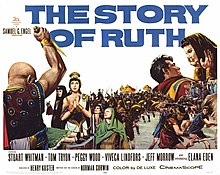
Ammon was an ancient Semitic-speaking kingdom occupying the east of the Jordan River, between the torrent valleys of Arnon and Jabbok, in present-day Jordan. The chief city of the country was Rabbah or Rabbat Ammon, site of the modern city of Amman, Jordan's capital. Milcom and Molech are named in the Hebrew Bible as the gods of Ammon. The people of this kingdom are called Children of Ammon or Ammonites.
The Book of Ruth is included in the third division, or the Writings (Ketuvim), of the Hebrew Bible. In most Christian canons it is treated as one of the historical books and placed between Judges and 1 Samuel.

For the Balaam Inscription, see the Deir Alla Inscription.

Moab is the name of an ancient Levantine kingdom whose territory is today located in southern Jordan. The land is mountainous and lies alongside much of the eastern shore of the Dead Sea. The existence of the Kingdom of Moab is attested to by numerous archaeological findings, most notably the Mesha Stele, which describes the Moabite victory over an unnamed son of King Omri of Israel, an episode also noted in 2 Kings 3. The Moabite capital was Dibon. According to the Hebrew Bible, Moab was often in conflict with its Israelite neighbours to the west.

Boaz is a biblical figure appearing in the Book of Ruth in the Hebrew Bible and in the genealogies of Jesus in the New Testament and also the name of a pillar in the portico of the historic Temple in Jerusalem. The word is found 24 times in the Scriptures, two being in Greek.

The Mesha Stele, also known as the Moabite Stone, is a stele dated around 840 BCE containing a significant Canaanite inscription in the name of King Mesha of Moab. Mesha tells how Chemosh, the god of Moab, had been angry with his people and had allowed them to be subjugated to the Kingdom of Israel, but at length, Chemosh returned and assisted Mesha to throw off the yoke of Israel and restore the lands of Moab. Mesha also describes his many building projects. It is written in a variant of the Phoenician alphabet, closely related to the Paleo-Hebrew script.

Naomi is Ruth's mother-in-law in the Hebrew Bible in the Book of Ruth. The etymology of her name is not certain, but it is possible that it means "good, pleasant, lovely, winsome."
Mahlon and Chilion or Kilion were two brothers mentioned in the Book of Ruth. They were the sons of Elimelech of the tribe of Judah and his wife Naomi. Together with their parents, they settled in the land of Moab during the period of the Israelite Judges. On foreign soil, Mahlon married the Moabite convert Ruth while Chilion married the Moabite convert Orpah.

King Mesha was a king of Moab in the 9th century BC, known most famously for having the Mesha Stele inscribed and erected at Dibon, Jordan. In this inscription he calls himself "Mesha, son of Kemosh-[...], the king of Moab, the Dibonite."

The Book of Ruth: Journey of Faith is a 2009 Christian film directed by Stephen Patrick Walker. It is based on the Book of Ruth, and was aired January 8, 2010 on the Trinity Broadcasting Network. The film stars Dan Haggerty, Lana Wood, Eleese Lester, Carman, and Sherry Morris as Ruth.
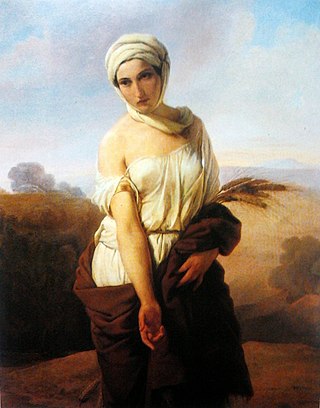
Ruth is the person after whom the Book of Ruth is named. She was a Moabite woman who married an Israelite, Mahlon. After the death of all the male members of her family, she stays with her mother-in-law, Naomi, and moves to Judah with her, where Ruth wins the love and protection of a wealthy relative, Boaz, through her kindness. She is the great-grandmother of David.

Elana Eden is an Israeli actress of film, television, and stage, best known for her film debut as the title role in 20th Century Fox's biblical epic The Story of Ruth (1960).
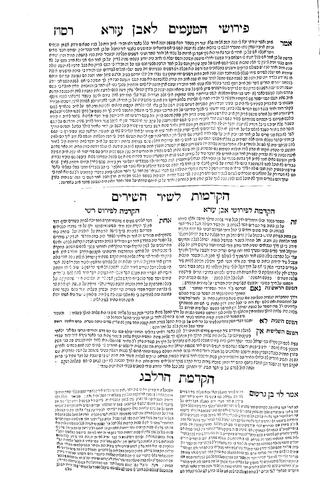
Ruth 2 is the second chapter of the Book of Ruth in the Hebrew Bible and in the Old Testament of the Christian Bible. This chapter contains the story of Ruth gleaning in the fields of Boaz, her deceased husband's near kinsman, and he notices her, Ruth 2:1-7; Boaz shows her great kindness, and blesses her, Ruth 2:8-16; Ruth brings what she got to Naomi; and tells her about Boaz; Naomi gives God thanks, and exhorts Ruth to continue in the field, Ruth 2:17-23.

Ziva Rodann, known first as Ziva Shapir, is an Israeli-American actress. She was a Hollywood film star and a frequent guest star on television series from the late 1950s to the late 1960s.
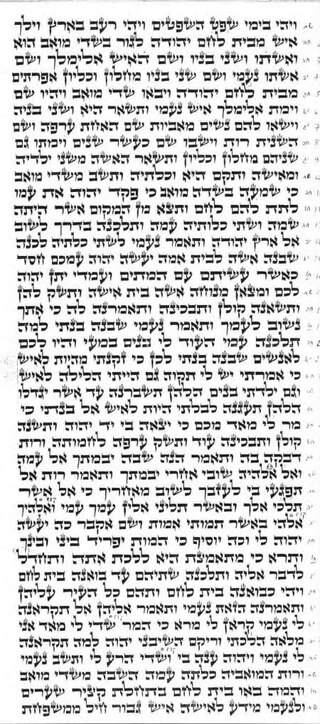
Ruth 1 is the first chapter of the Book of Ruth in the Hebrew Bible or the Old Testament of the Christian Bible, part of the Ketuvim ("Writings"). This chapter contains the story of how Elimelech, Ruth's father-in-law, driven by famine, moved into Moab, and died there ; Naomi returning home, Ruth accompanies her ; They came to Bethlehem.
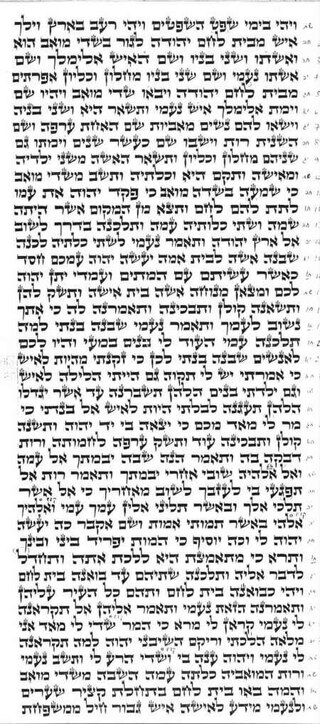
Ruth 3 is the third chapter of the Book of Ruth in the Hebrew Bible or the Old Testament of the Christian Bible, part of the Ketuvim ("Writings"). This chapter contains the story of how on Naomi's advice, Ruth slept at Boaz's feet, Ruth 3:1-7; Boaz commends what she had done, and acknowledges the right of a kinsman; tells her there was a nearer kinsman, to whom he would offer her, and if that man refuses, Boaz would redeem her, Ruth 3:8-13; Boaz sends her away with six measures of barley, Ruth 3:14-18.

Ruth 4 is the fourth chapter of the Book of Ruth in the Hebrew Bible or the Old Testament of the Christian Bible, part of the Ketuvim ("Writings"). This chapter contains the story of how Boaz goes up to the city gate, calls his kinsman; inquires whether he would redeem and marry Ruth, Ruth 4:1-5. He refuses, Ruth 4:6-8. Boaz, with the people witnessing and congratulating, buys the inheritance, and marries Ruth, Ruth 4:9-12. She gave birth to Obed the grandfather of King David, Ruth 4:13-17. The genealogy from Perez (Pharez) to David, Ruth 4:18-22.

2 Kings 3 is the third chapter in the second part of the Books of Kings in the Hebrew Bible or the Second Book of Kings in the Old Testament of the Christian Bible. The book is a compilation of various annals recording the acts of the kings of Israel and Judah by a Deuteronomic compiler in the seventh century BCE, with a supplement added in the sixth century BCE. After a short introduction to the reign of the last king of Israel from the Omride dynasty, Jehoram the son of Ahab, this chapter records the war of the coalition of the kings of Israel, Judah, and Edom, against Mesha the king of Moab with some contribution of Elisha the prophet. Another view of the events in this chapter is notably provided by the inscription on the Mesha Stele made by the aforementioned king of Moab in c. 840 BCE.

Numbers 31 is the 31st chapter of the Book of Numbers, the fourth book of the Pentateuch (Torah), the central part of the Hebrew Bible, a sacred text in Judaism and Christianity. Scholars such as Israel Knohl and Dennis T. Olson name this chapter the War against the Midianites.
Elimelech is a biblical figure mentioned in the Book of Ruth.
